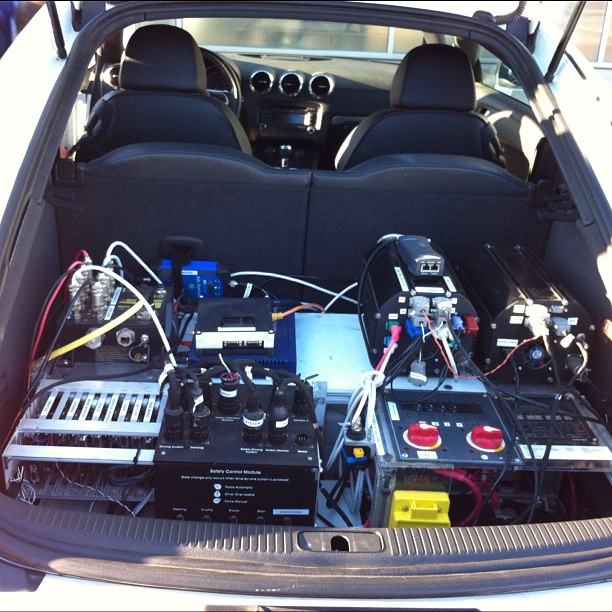Unmanned vehicle tried to overtake professional racer
Connoisseurs of racing simulators know that the computer always moves along an ideal path and does not make mistakes. But it is in the game, but what about real life?

On the Thunderhill motorcycle track in Northern California, for the first time in the world, there was a speed check between an unmanned vehicle and a professional racer. Unfortunately for fans of artificial intelligence, in the race for three miles (4.83 km) , a man won , overtaking an opponent for a few seconds.
In the video, you can assess the capabilities of the Shelley racing unmanned vehicle (Audi TTS model) during one of the tests, where it accelerates to 200 km / h.
')
Audi TTS run around on the Thunderhill motor track for several months. Engineers make different adjustments to the software and ensure that the car passes the track in less than two and a half minutes. But this was not enough to overtake a professional racer.
The project is led by Stanford University professor Chris Gerdes. In one of his lectures at TEDX, Professor Gerdes explains that a professional racer squeezes out of the car almost the maximum of possibilities, goes to the limit of loss of controllability that a computer cannot afford. For example, a person with his hands and other parts of the body feels the grip of tires against the road and feels the moment when the grip decreases. That is, the muscular memory and sensitivity of the human pilot are so far superior to the sensitivity of the sensors in the car's computer and the capabilities of the software.
The autopilot, even at a speed of 200 km / h, enters into corners with guaranteed safety. Probably, in order to overtake a person, you need to introduce into the program the possibility of losing control and an accident. That is, the autopilot must learn to take risks, otherwise it will not win.

The photo shows the insides of a racing Audi TTS unmanned.

On the Thunderhill motorcycle track in Northern California, for the first time in the world, there was a speed check between an unmanned vehicle and a professional racer. Unfortunately for fans of artificial intelligence, in the race for three miles (4.83 km) , a man won , overtaking an opponent for a few seconds.
In the video, you can assess the capabilities of the Shelley racing unmanned vehicle (Audi TTS model) during one of the tests, where it accelerates to 200 km / h.
')
Audi TTS run around on the Thunderhill motor track for several months. Engineers make different adjustments to the software and ensure that the car passes the track in less than two and a half minutes. But this was not enough to overtake a professional racer.
The project is led by Stanford University professor Chris Gerdes. In one of his lectures at TEDX, Professor Gerdes explains that a professional racer squeezes out of the car almost the maximum of possibilities, goes to the limit of loss of controllability that a computer cannot afford. For example, a person with his hands and other parts of the body feels the grip of tires against the road and feels the moment when the grip decreases. That is, the muscular memory and sensitivity of the human pilot are so far superior to the sensitivity of the sensors in the car's computer and the capabilities of the software.
The autopilot, even at a speed of 200 km / h, enters into corners with guaranteed safety. Probably, in order to overtake a person, you need to introduce into the program the possibility of losing control and an accident. That is, the autopilot must learn to take risks, otherwise it will not win.

The photo shows the insides of a racing Audi TTS unmanned.
Source: https://habr.com/ru/post/157079/
All Articles